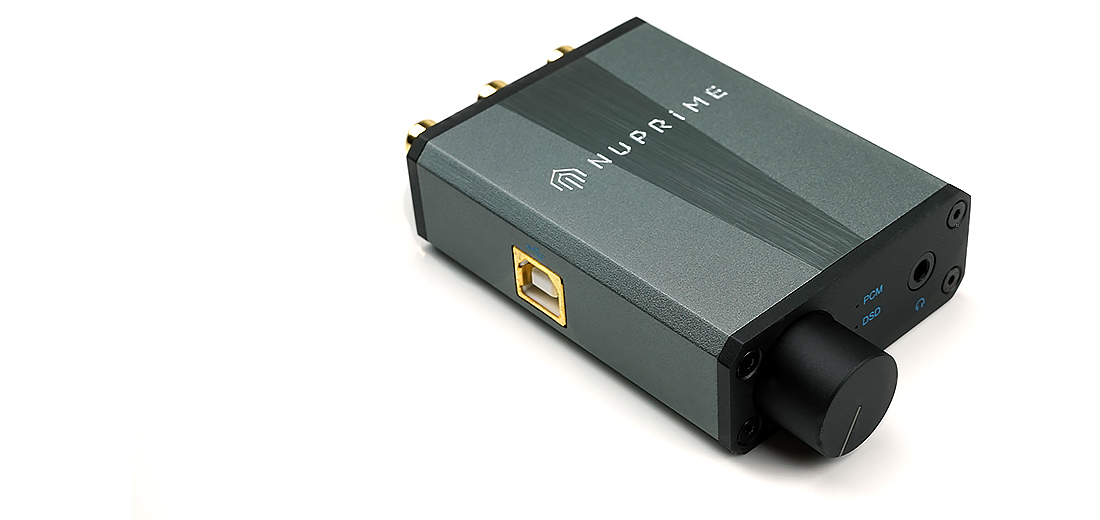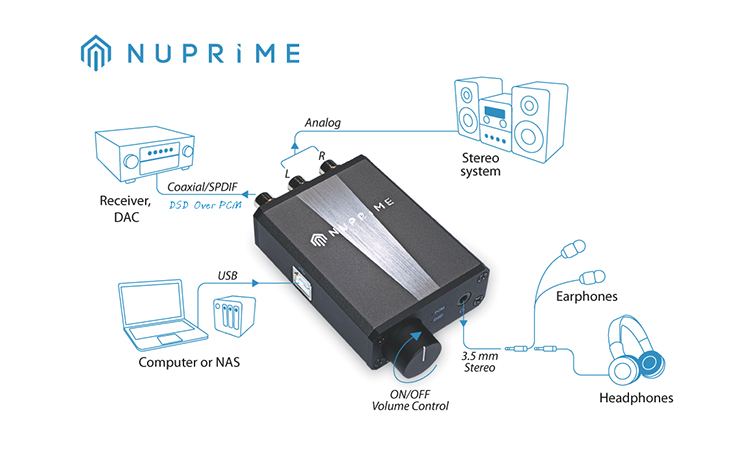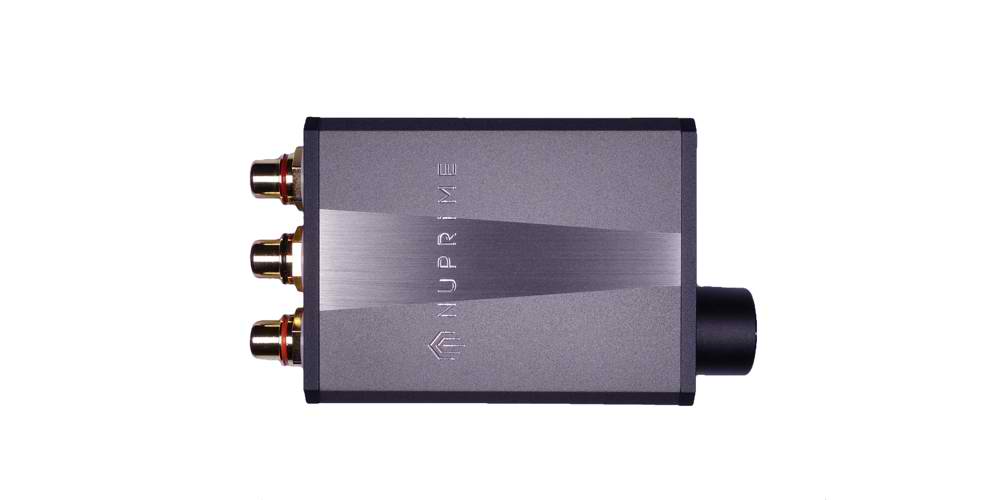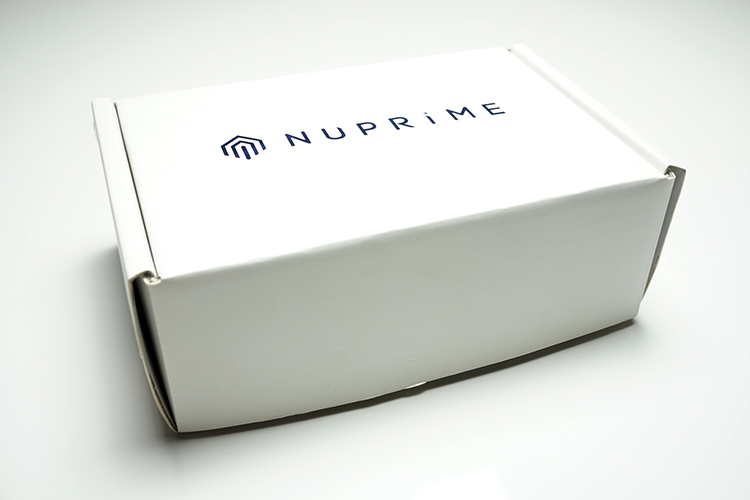Sound Impressions
Tonality & Presentation
The uDSD has a clean and evenly balanced presentation with a slight tonal bias to the lower treble but overall a fairly neutral tonal quality to its timbre.
It does have all the hallmarks of an ESS infused DAC/Amp but like the Peachtree Shift, I do like the ES9010’s control on the treble a bit better than some ES9018K2M units which tend to sound far harsher in the treble response. As such the uDSD top end is energetic, articulate and slightly north of neutral but nothing overly edgy or brittle sounding.
The low-end response on the uDSD is largely linear, tight and well behaved. It errs more to the accurate side of things so you get decent detail but nothing terribly full sounding or overly warmed up. It doesn’t sound thin or lacking in response but rather it keeps things relative accurate and well defined.
Mids on the uDSD stay neutral also with a decent level of detail but perhaps not quite as resolving or smooth sounding like the latest ES9028PRO range used in the Oppo HA-2SE. Imaging is accurate and staging has good height but slightly less depth and decent width. Instrumental layering is clean, well-controlled with a timbre that is more accurate than euphoric.
Matchability
Power
The uDSD has a reasonable power rating for its headphone output at 140mW x 2 into a 32-ohm load. It will drive efficient planars such as the Hifiman Edition X with relatively ease as well as medium sensitivity rated dynamic headphones such as the Sennheiser HD600.
You will get good voltage control with these loads up to around noon on the pot before one of the linear segments on the analog pot kicks in and things get loud fairly quick. Noise is non-existent also with headphones, even at 32 ohms.
Line Out Power
For line-level out, this is a fixed level rather than pot control variable when you are feeding analog amps or active speakers bear in mind that the uDSD will simply deliver a fixed Vrms at 2v and the rest will be controlled on the amp side.
The dynamics are good with line-level output, certainly more than adequate for active speakers, though I would just like a bit more impact and range with bigger amps for more sweeping scores. That being said the power levels on its analog outputs far exceed that of portable DAC solutions such as the Oppo HA-2SE which trails at 1Vrms.
Efficiency
IEMs are a different story. The initial linear segment of the volume pot has a fairly aggressive gain control and a high noise floor for efficient IEMs.
You will hear hiss on the Andromeda and to a lesser extent the Westone W80 but you will get a nice clean black background with the 150-ohms 89dB RHA CL1 and CL750 as well as zero noise on the Flares Pro single DD IEM.
Gain control is much harder also for efficient IEMs. It is not that you cannot get a good volume match, just the level of control is too precise and volume incremental too high too soon so you risk damaging your ears with a fast turn of the pot.
My advice for IEMs is to go for a dynamic IEM with medium to low sensitivity rating and a minimum of 32-ohms to get the most flexibility out the voltage and output power of the uDSD.
Tonal Pairings
Hifiman Edition X
Foobar FLAC 44.1k 16BIT (full volume)
uDSD volume – 1-2pm on the pot
A clean signature, not too rich, quite neutral with a little edge and energetic sparkle in the lower treble but nothing that overly colors the already energetic Edition X lower treble.
No sibilance, clear vocals, good pace, linear bass response, nothing bloated or warm. The detail is good, quick lower midrange instrumental passages are clean and clear and pacy. Timbre is more accurate and realistic rather than euphoric or edgy/sharp.
Sennheiser HD600
Foobar FLAC 44.1k 16BIT (full volume)
uDSD volume – noon – pm on the pot
Volume control was relatively easy with the HD600 though slightly more efficient than the Edition X at noon to 1pm and no background noise detected.
Tonally, a very neutral match right across the board with a clean quick sounding signature though if anything there is a tiny bit of lower-treble emphasis that I found relatively consistent across everything I tried with the uDSD.
The detail was excellent with good separation and a neutral instrumental timbre. Headroom on the HD600 pairing was also good though slightly less low-end emphasis, for that, use the HD650.
Campfire Audio Andromeda
Foobar FLAC 44.1k 16BIT (full volume)
uDSD volume – 9am – almost 10am on the pot
Noise level quite high for the efficient Andromeda with detectable background hiss. A little channel imbalance also on the analog pot with a right-side bias before it balanced out at around 9pm on the pot. Gain is quite aggressive for the Andromeda so you won’t get more than 9-10pm on the pot, maybe not even 10 so there is little room between no volume and volume max.
Tonally the Andromeda pairing is clean, well separated with an excellent resolution with just a little hardness in the lower treble and a timbre that’s more neutral than euphoric much like the Edition X. I prefer this pairing over the Edition X though with the more forward and clearer vocal performance.
The Edition X didn’t quite hit the mark on vocals with the uDSD but the Andromeda is a better match. Lower treble though is a bit glassy and prominent. Bass is more neutral than other Andromeda matches but it is tight and well defined.
Flare Audio Flares Pro
Foobar FLAC 44.1k 16BIT (full volume)
uDSD volume – 9am – almost 10am on the pot
Flare pros are less efficient than the Andromeda at around 100dB or less and can suck up a lot of power also making it one of the easier IEMs to drive with the uDSD. Nevertheless, gain wise the voltage levels on the uDSD is still less than that of a decent headphone so it is 10-11am at most on the volume pot unless you drop down your software volume which I recommend.
The Flare Pro pairing is a wonderful noise-free pairing though and one I highly recommend on that basis.
Tonally is clean, clear, neutral and with a smooth mid-range, accurate timbre, decent but not an earth-shattering bass response, more to the linear side with a slight bass uptick and a sparkling energetic lower treble experience.
Personally, I think the Flares Pro doesn’t get in the way too much in terms of the sound signature and given the uDSD is quite clean, clear and neutral that is pretty much what you will hear.
RHA CL750
Foobar FLAC 44.1k 16BIT (full volume)
uDSD volume – noon – 2pm
89db and 150-ohm earphones suck up the power of the uDSD with a noon to 2pm rating on the pot as well as full volume on FooBar. The noise floor is very low with no perceptible background hiss.
Tonally the match is not great, the signature is thin, top-heavy and lacking in low-end weight. I am not surprised though as the CL750 tends to sound better with fuller sounding or warmer signatures.
Treble is a touch thin and brittle sounding with an odd harmonics preference and lack of strong fundamentals the instrumental work lacks authority and body to sound pleasing.
The detail is excellent, as good as can be expected but for this, I would use the uDSD as a DAC feeding a warm analog amp so you get the detail but a richer sound.
Westone W80
Foobar FLAC 44.1k 16BIT (full volume)
uDSD volume – 8-9pm
If it not for the aggressive gain control on the uDSD volume I would declare this the most pleasing of IEM matches. Background hiss is very low also, the W80 does a better job than most at suppressing noise.
Tonally the warm tones of the W80 balance out the neutral clean signature of the uDSD producing a very natural sounding and balanced match. There is less of a mid-bass hump with this pairing than others and the treble response is better than most with excellent staging width and imaging. A pleasurable listen at the right volume setting.
Celsus SP One Active Speakers
Foobar FLAC 44.1k 16BIT (full volume)
uDSD volume – Fixed-line output so volume depends on active speaker volume setting
The uDSD has a fixed line-level output at 2Vrms for RCA out so you cannot control the volume to active speakers via the uDSD pot, rather you control via the speakers or software volume. Having said that noise levels are superb and the dynamics are excellent.
This is a sweet tonal match as the SP One are reasonably warm and mid-range focused speakers with a great near field performance. The uDSD detail retrieval is spot on as well as balancing the timbre with a touch more neutrality giving the SP One a more natural sound, though it does little to offset the mid-range focus. The uDSD will not overly color the tonal bias in one direction or another.
Select Comparisons
iBasso D14
$229
Technicality
The D14 is a portable Amp/DAC solution and for me, it is one of the best value products out on the market with a wide range of input and outputs and a higher-end DAC chip, the Sabre32 ES9018K2M. Unlike the uDSD, it can be used in a wider range of pairings both portable and desktop and has its own internal battery. Possibilities the uDSD can’t compete with include OTG, analog input, and SPDIF Optical & Coaxial input.
It does also sport a SPDIF input so interestingly you can actually pair the D14 with the uDSD’s coaxial output if you prefer to the D14 amp. In the case of IEMs, I would recommend if you want a lower noise floor as the SNR on the D14 is superior at 115dB into 32 ohms.
Tonality
Tonally both use Sabre DAC’s but I find the uDSD implementation to be a bit more neutral and balanced compared to the brighter sounding D14 which exhibits a bit more treble glare. Unlike the uDSD, I felt headphone pairings to be a bit thinner sounding though warmer IEMs seemed to be the perfect partner for the D14. I do find the D14 to be more open and spacious sounding than the uDSD which has a slightly less resolving rounded staging quality.
Peachtree Shift
$299
Technicality
Like the D14 the Shift is primarily a portable DAC/Amp and has its own external battery and even doubles as a power bank for use with smartphones on OTG or lightning (iOS). Much like the uDSD though it also uses the ESS ES9010 chipset with an XMOS USB chip implementation. However, decoding is limited to DSD128 whereas the uDSD can decode up to DSD256.
Now interestingly for a less portable solution, I find the options for the uDSD to be better for a number of reasons. First, it has a dedicated volume pot whereas the Shift relies completely on software volume controls. Second is the single 3.5mm socket which duals as both line out and headphone jack forcing constant switching based on your desired usage. The output power of both is similar actually with the uDSD having a slight edge at 2V compared to the Shift 1.9V at a 32-ohms load.
Noise Filtering
The noise performance with IEMs on the Shift is superior to the uDSD with virtually no noise even with fussy and highly sensitive IEMs such as the Jupiter and SE846 but this is more due to Peachtree’s filtering techniques to maximize the Shift for both IEMs and headphones.
This makes the Shift more IEM friendly with a gentler gain curve but it also does strange things with the IEM tonality making most IEM’s sound rather compressed and rather muted in comparison to the uDSD’s cleaner presentation and better dynamic range.
Tonality
Tonally, the Shift offers a warm to neutral musical presentation with a smooth sounding and an almost analog-type feel compared to the uDSD’s more neutral and cleaner signature. The Shift has a fairly full-sounding low end with a forward sounding mid-range, realistic vocal presence and a slightly laid back and forgiving treble presence.
In comparison, the uDSD is more linear sounding with a tighter low end, neutral mids and a more forward and energetic top-end with better headroom. I find the Shift to be more engaging with 32-ohm headphones with a nice dose of musicality but the weird tonal compression on IEMs for noise makes me choose the uDSD even if there is a slight bit of noise. It just sounds more accurate.
Our Verdict
Whilst the likes of FiiO’s miniatures and the various Walnut DAC/Amp iterations are truly bargain-basement first-time upgrades the NuPrime uDSD is the real deal for me in capturing mid-fi sound quality for a very reasonable price. The power is there, especially in the RCA out which outmaneuver most portable amp/DACs with a single 3.5mm line out.
The build quality is tremendous also and very finely crafted. It doesn’t look like a $179 do it all audio device, it looks way more expensive. NuPrime has always done very well in the build department with their high-end products and the uDSD is no different. I would have loved if the shape was a little squatter to get that USB switched from the side to the back but its minor quibble than a major issue.
Tonally it may have a slightly watered down ES chip, not the most modern by today’s standards but it still does all the relevant codecs to industry-standard bit and sample rates including DSD256. The Shift from Peachtree has the same chip but lower decoding rates and doesn’t sound as good.
This is neutral, clean and balanced sounding DAC with a little edge in the lower treble but nothing brittle or sharp. It is a good implementation but efficient IEM users might want to look elsewhere as the amp noise levels are too high. The uDSD plays out well with less efficient IEMs, speakers and headphones making it a very flexible and handy device to have.
Technical Specifications
Input
- USB 1.1, 2.0 compatible
- USB 1.1, 2.0 compatible
Outputs
- Analog Stereo RCA Out
- Digital Coaxial Out
- Headphone Amplifier Out (3.5 mm-jack socket)
Specs
- USB sampling rates: 44.1,48,88.2,96,176.4,192,352.8, 384KHz and DSD 2.8,5.6,11.2MHz
- USB sampling rates: 44.1,48,88.2,96,176.4,192,352.8, 384KHz and DSD 2.8,5.6,11.2MHz
- Bit resolution: 16-24-bits.Output: Analog RCA 2V
- Analog RCA 2V rms (DAC out)
- Headphone output: max 140mW x 2 @ 32 ohm
- Dynamic range: 98dB
- S/N ratio: 112 d
- THD+N < 0.01%





